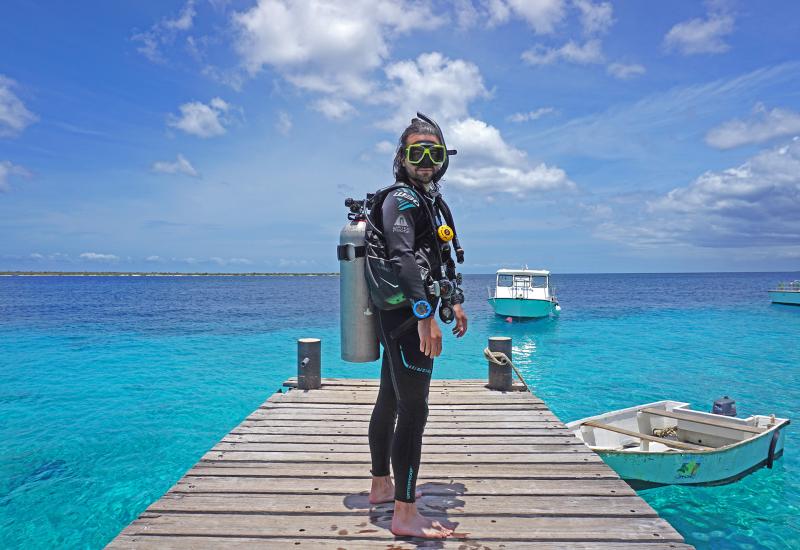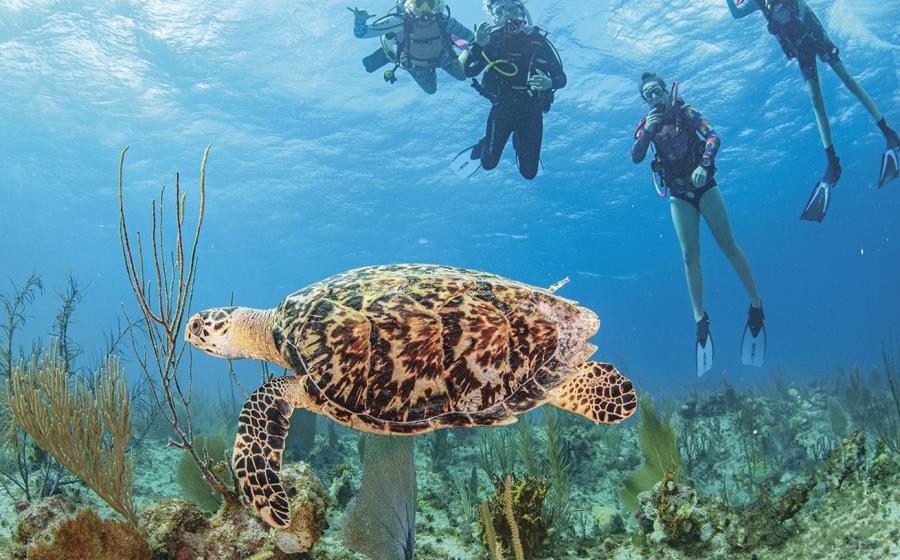What Courses to Take After Your Open Water Certification

Karl Shreeves/© PADI, used with permissionYou have your brand new C-card, but what's next?
You’re a PADI Open Water Diver; now what? Go diving, of course, but learning more by taking additional PADI courses is worthwhile. The PADI Advanced Open Water Diver course should be on your list, but PADI Enriched Air Diver is — by far — the most popular specialty course because it gives you what every diver wants: more time underwater. Here’s why:
Air is roughly 21 percent oxygen, 79 percent nitrogen and fine for recreational scuba. But nitrogen dissolves into our tissues while diving. Dive computers (or tables) let us keep this nitrogen within established limits, so it dissolves back out without effect. Exceeding limits puts us at risk for the so-called “bends,” or decompression sickness, so we take them seriously. The deeper and more we dive in a day, the more nitrogen accumulates, reducing our allowable dive time.
But we can enrich air (hence the name) by adding oxygen to reduce the nitrogen. The benefit is huge. For example, using air, the time limit when diving to 60 feet is about 55 minutes. Using EANx32 oxygen (enriched air with 32 percent oxygen), your bottom time is about 90 minutes, more than 30 minutes longer. Even if you don’t stay this long (other factors limit a dive), subsequent dives can be longer because your body absorbs less nitrogen.
Sounds simple, so why a course? Because extra oxygen has considerations related to your gear, confirming the oxygen percentage, oxygen-related depth limits and setting your dive computer appropriately. None of these are particularly difficult to deal with, but they are important for managing your risk when using EANx.
You can complete the PADI Enriched Air Diver course in as little as a day. Go to padi.com to get started online, or contact your PADI Dive Center or Resort for scheduling and information.
Lesson Plan: Four fun PADI courses
AWARE Coral Reef Conservation: Appreciate the complexity of these habitats and learn how you can help conserve vital ocean habitats.
Cavern Diver: From freshwater springs to Mexican cenotes, you’ll find large, dark spaces to explore. This course gives you the knowledge and skills to explore caverns safely.
Night Diver: At night, drop into a whole new world and watch it come to life under the glow of your dive light. This course helps you to adapt skills you have learned and use them in a dark ocean.
AWARE Fish Identification: Start a life list when you sign up for this course. Once you learn to recognize what types of fish you see, you’ll find it easier to ID the exact species after a dive.










